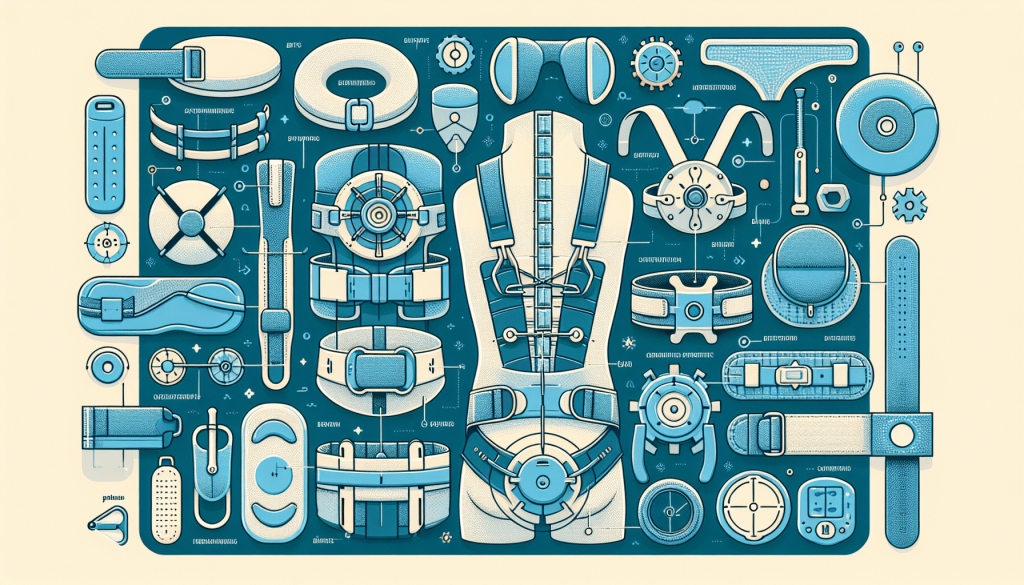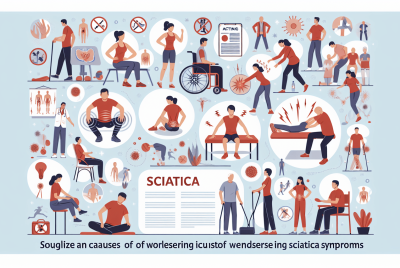What Kind Of Back Support Do You Need?
Whether you suffer from occasional back pain or chronic discomfort, finding the right kind of back support can make all the difference in your daily life. It’s important to understand that not all backs are created equal, and what works for one person may not work for another. In this article, we will explore the various types of back support available to help you determine which one is best suited to your unique needs. From lumbar cushions to back braces, we’ve got you covered when it comes to finding the perfect solution for your back woes. So, let’s get started on your journey to a pain-free back!
Choosing the Right Back Support
When it comes to choosing the right back support, it’s essential to understand the different types of products available and consider your specific needs. Whether you’re dealing with back pain, poor posture, or simply want to prevent future issues, there are various options to explore.
Understanding Different Types of Back Support Products
Back support products come in a wide range of options, each designed to address specific back-related concerns. Some of the most common types include ergonomic chairs, back braces and supports, lumbar pillows and cushions, mattresses and mattress toppers, ergonomic office setups, exercises for back support, heat and cold therapy, maintaining good posture, and back support accessories.
Considering Your Specific Back Support Needs
Before diving into the specifics of each type of back support product, it’s important to consider your unique needs. Are you experiencing lower back pain? Do you spend a lot of time sitting at a desk? Are you looking for preventive measures to maintain good posture? Identifying your specific requirements will help guide your decision-making process and choose the most appropriate back support product.
Consulting with Healthcare Professionals
While it’s helpful to gather information and research various back support products, consulting with healthcare professionals is always a wise decision. They can provide personalized advice, taking into account your medical history and any underlying conditions. Physicians, physical therapists, and chiropractors can offer valuable insights and recommendations tailored to your needs, ensuring you make an informed decision about the right back support product for you.
Ergonomic Chairs
Ergonomic chairs are specially designed to provide optimal support and comfort for the back, promoting good posture and reducing the risk of back pain. These chairs are widely used in office settings but can also be beneficial for home use.
Benefits of Ergonomic Chairs
Ergonomic chairs offer several benefits for back support. They typically feature adjustable lumbar support, allowing you to customize the chair’s backrest to your specific needs. This helps maintain the natural curve of your spine and prevents slouching. Ergonomic chairs also have adjustable seat height and armrests, promoting proper alignment and reducing strain on the back and neck.
Features to Look for in an Ergonomic Chair
When choosing an ergonomic chair, there are a few key features to look for. Firstly, adjustable lumbar support is crucial, as it allows you to find the perfect fit for your lower back. The chair should also have adjustable seat height and armrests, ensuring that your feet rest flat on the floor and your arms are comfortably positioned. Additionally, seat depth adjustment and breathable fabric can add to the overall comfort and support provided by the chair.
Tips for Choosing the Right Ergonomic Chair
To choose the right ergonomic chair, consider the duration of use, your body proportions, and any specific needs or preferences you have. Sit in the chair and assess its comfort and adjustability. Make sure the chair provides adequate lumbar support and encourages you to sit with good posture. Additionally, check customer reviews and seek recommendations from healthcare professionals or colleagues who have experience with ergonomic chairs.

Back Braces and Supports
Back braces and supports are external devices worn around the torso to provide stabilization and promote proper alignment of the spine. They can be beneficial for individuals with existing back pain, injuries, or those who engage in physically demanding activities.
Types of Back Braces and Supports
There are different types of back braces and supports designed to target specific areas of the back. Lumbar braces, also known as lower back braces, focus on the lumbar region and are frequently used for lower back pain relief. Thoracic braces provide support for the middle and upper back, while cervical braces are designed to stabilize the neck. Additionally, there are full-back braces that cover the entire back and offer comprehensive support.
When to Use Back Braces and Supports
Back braces and supports can be used in various situations, depending on individual needs. They are commonly used during recovery from back injuries, such as strains or sprains. Athletes involved in high-impact sports or heavy lifting may also benefit from wearing back braces for added stability and protection. Individuals with chronic back pain or poor posture can use back braces and supports to improve spinal alignment and provide relief.
Choosing the Right Back Brace or Support
Choosing the right back brace or support requires careful consideration of your specific needs and the intended use. The type of back pain or condition you have will influence the style and level of support required. Consult with a healthcare professional to determine the appropriate type of brace or support and ensure it fits properly. An ill-fitting brace may not provide the desired support, so it’s important to measure yourself accurately and follow manufacturer guidelines.
Lumbar Pillows and Cushions
Lumbar pillows and cushions are versatile back support products that can be used in various settings, including office chairs, car seats, and even on sofas at home. They primarily target the lumbar region, providing support and promoting better posture.
Benefits of Lumbar Pillows and Cushions
Using lumbar pillows and cushions can offer several benefits for back support. They help maintain the natural curve of the lower back, reducing the strain on the spinal discs and muscles. By providing additional lumbar support, these pillows and cushions can alleviate back pain and discomfort caused by prolonged sitting. They also encourage proper alignment of the spine, preventing slouching and promoting good posture.
Types of Lumbar Pillows and Cushions
Lumbar pillows and cushions come in various shapes, sizes, and materials. The most common type is a small, curved pillow or cushion that fits snugly against the lower back. They can be inflatable or filled with foam, memory foam, or other supportive materials. Some lumbar pillows are designed to be strapped onto chairs, ensuring they stay in place even during movements. There are also full-length lumbar cushions that provide support for the entire back.
Using Lumbar Pillows and Cushions Properly
To use lumbar pillows and cushions effectively, position them at the curve of your lower back when sitting. The pillow or cushion should fit snugly, providing support without pushing you forward. Adjust the position and firmness as needed to find the most comfortable and supportive fit. It’s important to note that lumbar pillows and cushions are not a substitute for proper ergonomic chairs or back braces but can complement these back support products.

Mattresses and Mattress Toppers
The impact of mattresses on back support should not be overlooked, as we spend a significant portion of our lives sleeping. Choosing the right mattress and mattress topper can make a substantial difference in maintaining a healthy back.
The Impact of Mattresses on Back Support
A supportive mattress is essential for maintaining good spinal alignment and preventing back pain. An overly soft mattress can cause uneven weight distribution and sagging, leading to misalignment of the spine. On the other hand, an excessively firm mattress may not provide enough contouring and cushioning for pressure points. Therefore, finding the right level of firmness that adequately supports the natural curves of the spine is crucial for proper back support during sleep.
Choosing the Right Mattress for Back Support
When selecting a mattress, consider your preferred sleeping position and any existing back conditions. Side sleepers may prefer a slightly softer mattress to accommodate the shoulders and hips, while back or stomach sleepers may benefit from a firmer surface. The mattress should provide support for the natural curves of the spine, ensuring proper alignment. Memory foam and latex mattresses are popular choices for their contouring properties and pressure relief capabilities.
Benefits of Mattress Toppers for Back Support
Mattress toppers can be a cost-effective solution to improve the supportiveness of an existing mattress. They add an extra layer of cushioning and support, enhancing the overall comfort and aligning the spine. Memory foam and latex toppers are popular for their contouring properties and can effectively relieve pressure points. Additionally, mattress toppers can also assist in prolonging the lifespan of a mattress by reducing wear and tear.
Ergonomic Office Setups
Creating an ergonomic office setup is crucial for maintaining proper back support, especially for individuals who spend extended periods sitting at a desk. Proper desk and chair height, along with the arrangement of equipment and accessories, can significantly impact your overall back health.
Importance of Ergonomic Office Setups for Back Support
An ergonomic office setup is designed to minimize strain on the back and promote good posture, reducing the risk of back pain and discomfort. Sitting for prolonged periods can lead to muscle imbalances, poor posture, and increased pressure on the spinal discs. An ergonomically optimized workspace helps maintain the natural curves of the spine, supporting proper alignment and reducing the likelihood of developing or exacerbating back problems.
Ergonomic Desk and Chair Height
Proper desk and chair height are crucial components of an ergonomic office setup. The height of your desk should allow your arms to rest comfortably on the surface while maintaining a 90-degree angle at the elbows. Adjust your chair height so that your feet rest flat on the floor, with your knees at a 90-degree angle. An adjustable chair with lumbar support can further enhance the ergonomic benefits.
Arranging Equipment and Accessories Properly
Arrange your equipment and accessories in a way that minimizes strain on your back and encourages good posture. Position your monitor at eye level, directly in front of you, to avoid excessive neck and shoulder strain. Keep frequently used items, such as the mouse and keyboard, within easy reach to avoid excessive stretching. Consider using a document holder to keep reference materials at eye level, eliminating the need for constant neck flexion.
Exercises for Back Support
Incorporating exercises for back support into your routine can strengthen and stretch the muscles involved in maintaining good posture, reducing the risk of back pain and injuries.
Strengthening and Stretching Back Muscles
Exercises that target the back muscles can improve their strength and endurance, providing better support for the spine. Strengthening exercises may include back extensions, rows, and bridges. Stretching exercises, such as the cat-camel stretch and seated spinal twist, can increase flexibility and alleviate tension.
Core Exercises for Back Support
A strong core plays a significant role in maintaining good back support. Core exercises, such as planks, bird dogs, and abdominal curls, engage the muscles of the abdomen, back, and pelvis, providing stability and balance. By strengthening the core, you enhance the overall support for the spine and reduce the risk of excessive strain or injury.
Consulting with a Physical Therapist
If you’re unsure about which exercises are suitable for your specific needs or have existing back pain or injuries, it’s wise to consult with a physical therapist. They can assess your condition, identify any weaknesses or imbalances, and create a tailored exercise program to address your back support needs. Working with a professional ensures that you perform exercises correctly and safely.
Heat and Cold Therapy
Heat and cold therapy are simple yet effective methods of relieving back pain and promoting back support.
Benefits of Heat Therapy for Back Support
Applying heat to the affected area can help relax muscles, increase blood flow, and reduce stiffness. Heat therapy is particularly beneficial for muscle spasms and chronic muscle tension. It can improve flexibility and promote a sense of relaxation, alleviating pain and discomfort.
Benefits of Cold Therapy for Back Support
Cold therapy, often in the form of ice packs or cold compresses, is effective in reducing inflammation and numbing pain. It can be beneficial for acute injuries, such as sprains or strains, by slowing down blood flow and reducing swelling. Cold therapy can help reduce muscle soreness after physical activity, providing temporary relief.
Using Heat and Cold Therapy Properly
When using heat therapy, apply a heating pad or warm compress to the affected area for around 15-20 minutes at a time. Ensure the temperature is warm but not excessively hot to avoid burns. Cold therapy, on the other hand, involves applying an ice pack or cold compress for approximately 10-15 minutes at a time. Wrap the ice pack in a thin towel before applying it directly to the skin to prevent frostbite or skin damage.
Maintaining Good Posture
Maintaining good posture is essential for optimal back support. Proper posture aligns the spine, reduces strain on muscles and ligaments, and promotes overall back health.
Understanding the Importance of Good Posture
Good posture ensures that your body is properly aligned, reducing stress on the spine and surrounding structures. It allows for efficient movement and minimizes the risk of muscle imbalances, back pain, and postural deformities. Maintaining good posture promotes a healthy back and contributes to overall physical well-being.
Tips for Maintaining Good Posture
To maintain good posture, start by keeping your shoulders relaxed and your head aligned with your spine. Avoid slouching or rounding the shoulders forward. Sit or stand tall, imagining a string pulling the crown of your head upwards. Keep your core engaged and distribute your body weight evenly between both feet. Take regular breaks from sitting to stretch and move around, preventing stiffness and promoting good posture.
Ergonomic Techniques for Better Posture
Implementing ergonomic techniques can further support good posture. When sitting, ensure that your chair and desk are at the proper height, allowing your feet to rest flat on the floor and your arms to be comfortably positioned. Use supportive backrests, such as lumbar pillows or ergonomic chairs, to maintain the natural curves of your spine. When standing, distribute your weight evenly between both feet and avoid prolonged periods of standing without breaks.
Back Support Accessories
There are various back support accessories available on the market that can further enhance your back support efforts.
Massage Chairs and Devices
Massage chairs and handheld devices can provide targeted relief to specific areas of the back. They utilize massage techniques, such as kneading, rolling, and vibration, to alleviate tension and promote relaxation. Regular use of massage chairs or devices can improve blood circulation, reduce muscle tightness, and enhance overall back comfort.
Posture Correctors
Posture correctors are wearable devices designed to improve and maintain proper posture. They typically consist of adjustable straps or braces that gently pull the shoulders back, aligning the spine and preventing slouching. Posture correctors can be particularly useful for individuals with chronic poor posture or those looking to reinforce good posture habits.
Other Back Support Accessories
Other back support accessories include seat cushions with built-in lumbar support, back massagers, and traction devices. Seat cushions with lumbar support can provide additional comfort and reinforcement for the lower back. Back massagers, such as foam rollers or handheld devices, can target specific areas of tension or muscle soreness. Traction devices can gently stretch the spine, relieving pressure and promoting spinal alignment.
In conclusion, choosing the right back support requires understanding the different types of products available, considering your specific needs, and consulting with healthcare professionals. Whether it’s an ergonomic chair, back brace, lumbar pillow, mattress, exercise routine, or posture correction devices, there are numerous options to explore. By incorporating appropriate back support measures into your daily life, you can maintain a healthy back, prevent pain and discomfort, and promote overall well-being. Remember, taking care of your back is an investment in your future health and happiness.




